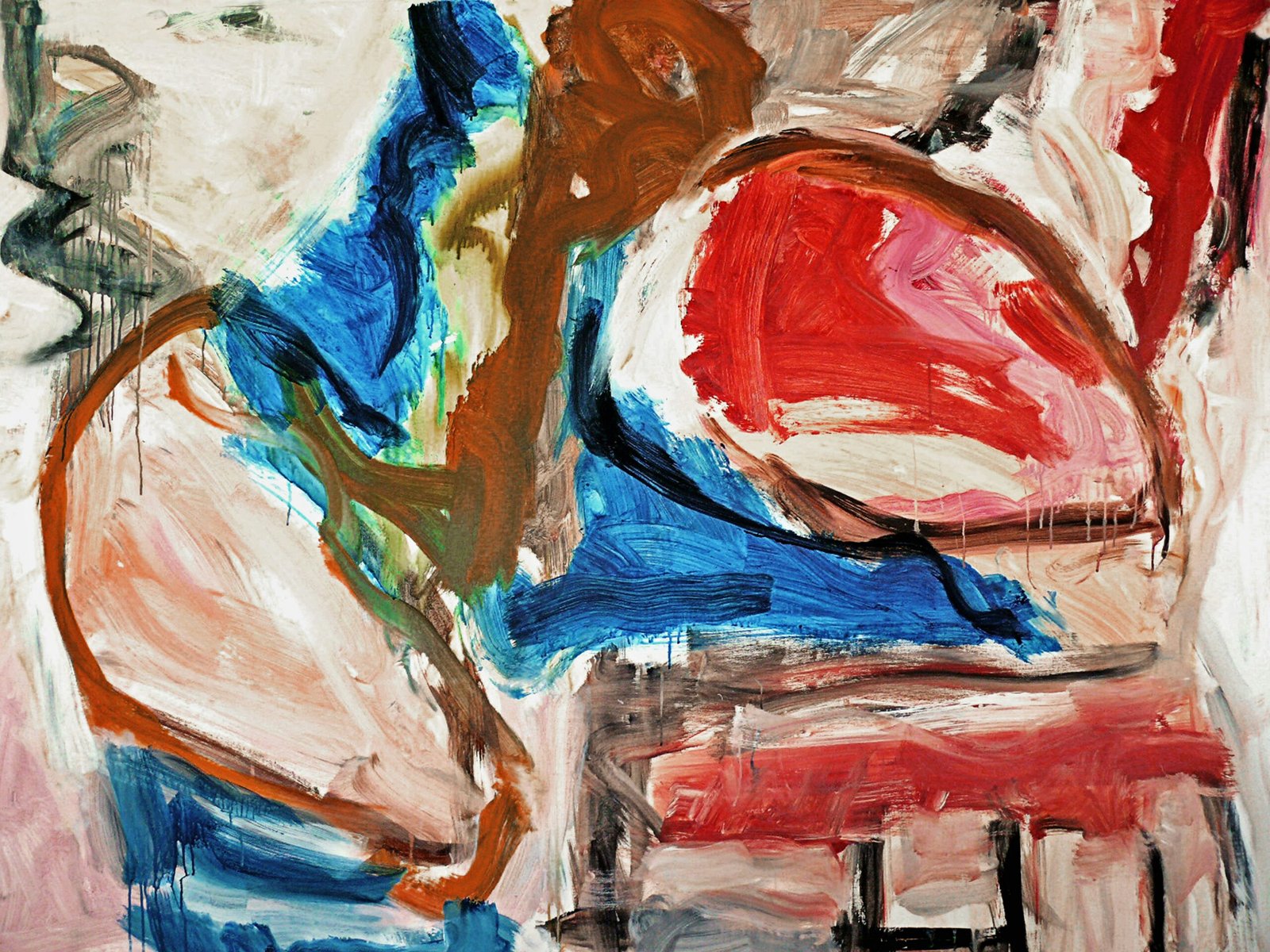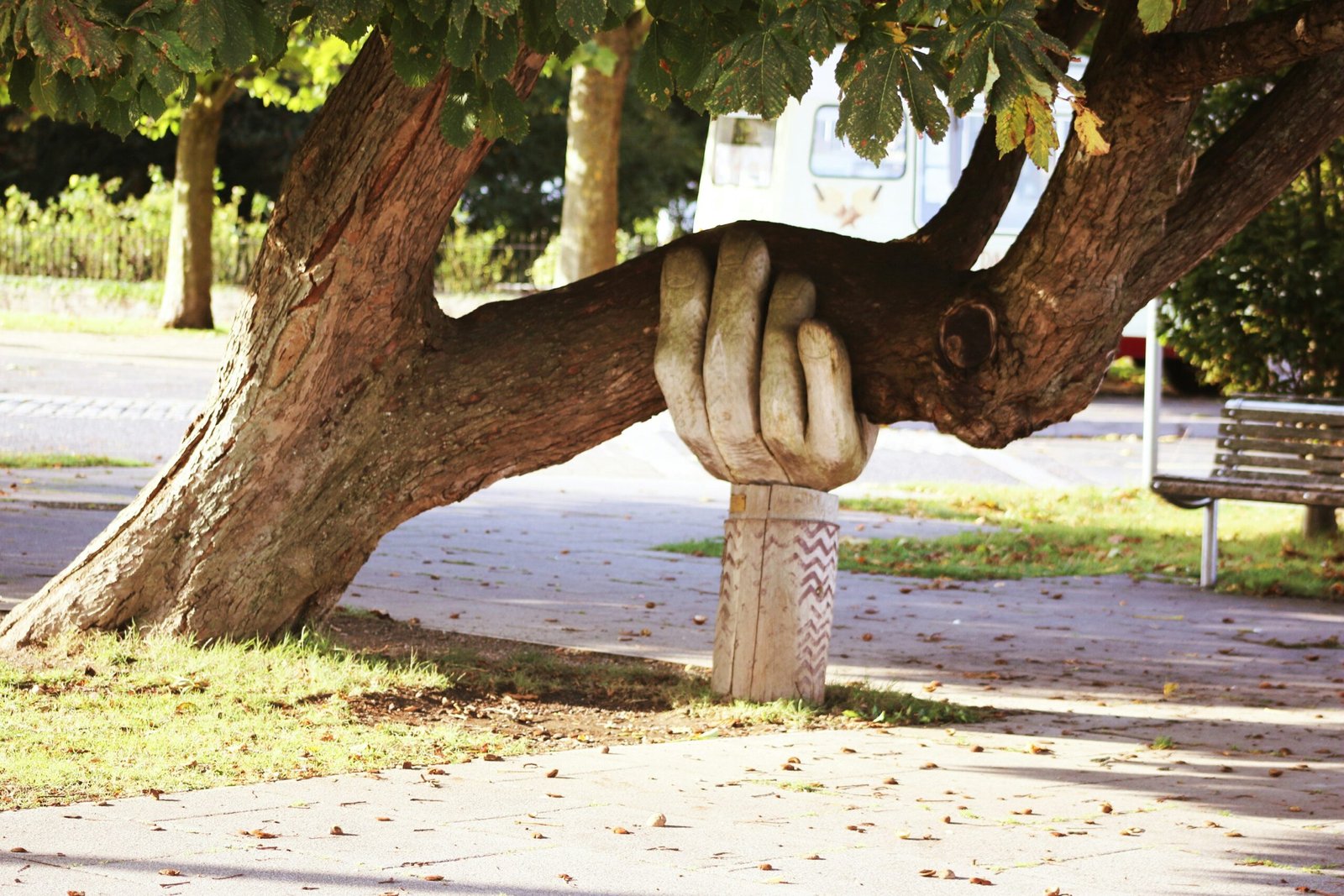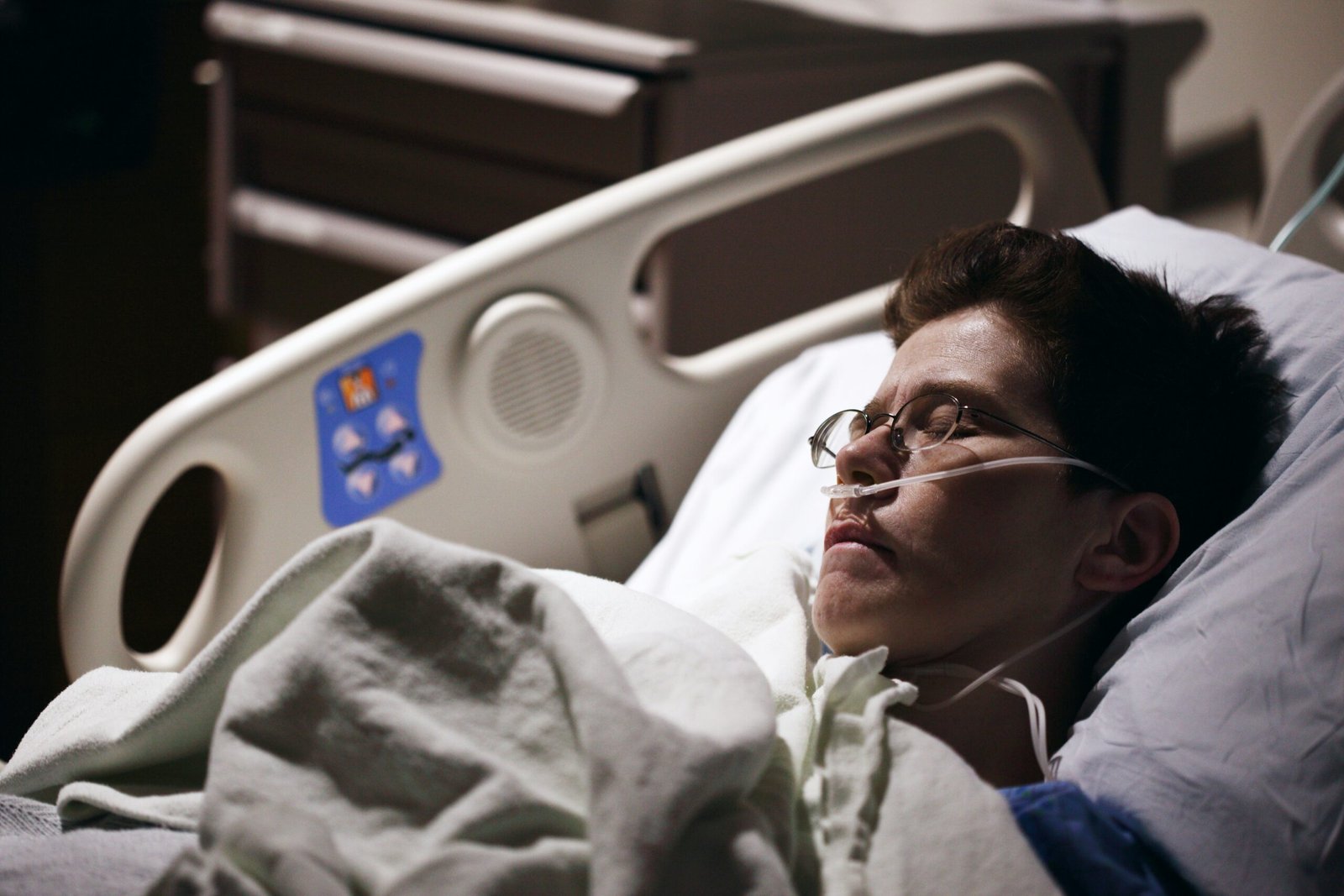Search opens in new window
Introduction to Life After a Stroke
A stroke often marks a significant turning point in an individual’s life. For previously independent and robust people, the sudden shift in their capabilities can be both perplexing and overwhelming. This dramatic change not only impacts the physical but also the psychological and emotional facets of their existence.
Understanding this new reality post-stroke is crucial for both the survivor and their support network. Many stroke survivors experience a range of impairments, including reduced mobility, speech difficulties, and cognitive challenges. These new limitations often necessitate considerable adjustments in daily routines and lifestyle.
The importance of embracing support systems cannot be overstated. These support systems, encompassing both human assistants and specialized gadgets, play an instrumental role in fostering a sense of normalcy and enhancing the quality of life for stroke survivors. Accepting and incorporating this assistance can significantly mitigate the daily challenges posed by the stroke-induced limitations.
Overall awareness of the post-stroke condition is vital. It empowers individuals to recognize the need for adaptive strategies and to seek appropriate interventions promptly. Through understanding and acceptance, stroke survivors, alongside their caregivers, can effectively navigate this new chapter, ensuring the best possible outcomes for recovery and rehabilitation.
Recognizing the Signs and Immediate Actions
Stroke is a medical emergency requiring prompt action. Recognizing early warning signs and understanding the necessity of swift response can significantly impact recovery outcomes. Strokes often present sudden and dramatic symptoms, and awareness of these indicators is crucial in mitigating long-term effects.
One of the most common symptoms of a stroke is sudden numbness or weakness, particularly on one side of the body. This numbness can affect the face, arm, or leg, leading to a noticeable asymmetry. Another critical sign is sudden confusion, difficulty speaking, or trouble understanding speech. This can manifest as slurred speech or complete inability to articulate thoughts.
Vision problems are also among the initial signs of a stroke. Individuals may experience sudden trouble seeing in one or both eyes, which may include blurred, blackened, or double vision. Another significant symptom is difficulty walking. Strokes often cause dizziness, loss of balance, or lack of coordination, thus making movement challenging.
Severe headaches, often described as the worst headache of one’s life, can also be indicative of a stroke. These headaches typically have no known cause and come on very abruptly. Recognizing these symptoms, whether they occur singly or in combination, is paramount. Immediate action is critical as the adage “time is brain” underscores the importance of quick medical intervention to preserve brain function.
When a stroke is suspected, the importance of seeking medical attention immediately cannot be overstated. Prompt treatment not only improves the chances of survival but also reduces the risk of facing severe disability. Utilization of the mnemonic FAST (Face drooping, Arm weakness, Speech difficulty, Time to call emergency services) can assist in recalling the signs and taking appropriate immediate actions.
Understanding these early warning signs and acting swiftly can make a substantial difference in the aftermath of a stroke, reaffirming the necessity for awareness and prompt response in stroke management.
The emotional aftermath of a stroke often introduces a complex landscape of feelings such as frustration, sadness, and helplessness. Experiencing a sudden disruption in physical autonomy, individuals may confront new psychological barriers that were previously unimaginable. This dramatic shift not only challenges one’s mental resilience but also reshapes the perception of self and daily living.
Feelings of frustration often surface as basic tasks become arduous or unmanageable without help. Activities that were once performed effortlessly now require considerable effort and adaptation, leading to a profound sense of loss. Sadness can also accompany these changes, as individuals grieve the life they had before the stroke, struggling with the profound sense of altered capability.
Helplessness is a common companion in this journey, stemming from the newfound dependence on others for completing everyday activities. The need for assistance, whether from human assistants or gadgets, can bring about feelings of inadequacy. Such emotional distress can be intensified by a perceived loss of control and autonomy, shaking the foundation of personal independence.
Psychological barriers such as anxiety and depression may arise, complicating the recovery process and overall quality of life. Fear of recurrence, embarrassment from perceived shortcomings, and diminished self-esteem can all hinder emotional adjustment. It is crucial to address these psychological challenges comprehensively to avoid them becoming long-term detriments.
Coping Strategies and Support Networks
Coping strategies play a vital role in navigating these emotional complexities. Counseling and therapy can provide a safe space to process these feelings and develop healthy coping mechanisms. Cognitive-behavioral therapy (CBT) is particularly effective in helping individuals reframe negative thoughts and foster a more positive outlook.
Engaging with support networks, including family, friends, and stroke support groups, can significantly alleviate emotional burdens. These networks offer both practical assistance and emotional solace, fostering a sense of community and shared experience. Encouraging participation in social activities, along with hobbies or interests adapted to new capabilities, can further promote emotional well-being.
Overall, understanding and addressing the emotional impact of a stroke is paramount in aiding a holistic recovery. The integration of emotional support and practical assistance forms a robust foundation that can greatly enhance one’s adaptation to new realities.
Understanding Physical and Cognitive Changes
A stroke can result in a variety of physical and cognitive changes, each varying in severity and impact. One of the most common physical consequences is impaired motor skills. Patients may experience weakness or paralysis on one side of the body, making it difficult to perform daily tasks. Additionally, coordination and balance can be affected, posing a significant risk of falls. These physical limitations often necessitate human assistance and the use of assistive gadgets to support mobility and independence.
Speech difficulties are another prevalent issue post-stroke. Aphasia, the impairment of language abilities, can hinder communication. This can be frustrating for both the individual and their caregivers, making everyday interactions challenging. Speech therapy and communication aids are critical in enabling patients to reclaim their ability to express themselves and understand others.
Cognitive changes also play a significant role in the aftermath of a stroke. Memory issues, such as difficulty recalling recent events or retaining new information, are common. These memory deficits can impact a person’s capacity to manage their day-to-day activities efficiently. Additionally, problems with executive functions, such as planning, problem-solving, and attention, can further complicate the recovery process. Understanding these cognitive challenges is vital for developing effective rehabilitation strategies and ensuring comprehensive care.
The necessity for additional assistance post-stroke is evident when considering these physical and cognitive changes. Human assistants can provide essential support by helping with mobility, communication, and daily living tasks. Assistive gadgets, ranging from mobility aids to innovative communication devices, offer practical solutions to enhance independence and quality of life for stroke survivors. Recognizing and addressing these changes is crucial for helping individuals navigate their recovery journey effectively and regain as much function as possible.
The Role of Human Assistants
The journey to recovery after a stroke is multifaceted, requiring a comprehensive network of support. Human assistants, including caregivers, nurses, and therapists, play an indispensable role in the rehabilitation and recovery process of stroke survivors. These professionals not only offer vital physical support but also provide emotional encouragement, fostering an environment conducive to healing and gradual regaining of independence.
Caregivers, often family members or trained professionals, are frequently on the frontline of this support system. They assist with daily activities that the stroke survivor might find challenging, such as bathing, dressing, and meal preparation. Their involvement ensures that basic needs are met, allowing the individual to focus on recovery. Moreover, caregivers monitor the survivor’s condition, manage medications, and coordinate with healthcare providers, ensuring a cohesive and continuous care strategy.
Nurses, particularly those specializing in stroke recovery, offer more specialized assistance. They provide medical care, such as wound care, management of chronic conditions, and administration of intravenous medications. Nurses also play a critical role in educating stroke survivors and their families about what to expect during recovery and how to manage symptoms and prevent complications. Their expertise extends to facilitating successful transitions from hospital to home, ensuring that the home environment is adequately prepared for the survivor’s needs.
Therapists, including physical, occupational, and speech therapists, contribute significantly to the recovery process by addressing specific impairments caused by the stroke. Physical therapists focus on improving mobility, balance, and coordination through tailored exercise plans. Occupational therapists help stroke survivors relearn daily activities and develop strategies to perform tasks more efficiently and safely. Speech therapists work on communication skills and swallowing difficulties, which are common after a stroke. Each therapist brings specialized knowledge and techniques designed to accelerate recovery and restore functional independence.
The value of the expertise and companionship provided by these human assistants cannot be overstated. Their involvement encourages a supportive and positive environment that instills confidence in stroke survivors as they navigate their path to recovery. The multifaceted support system created by caregivers, nurses, and therapists fosters not only physical rehabilitation but also emotional resilience, significantly contributing to the holistic well-being of stroke survivors.
Introducing Stroke Gadgets and Technology
The role of technology in assisting stroke survivors has become increasingly significant in recent years. Modern advancements have led to the development of an array of gadgets designed to facilitate recovery and enhance the daily lives of those affected by strokes. These technological aids include mobility aids, speech therapy apps, and home automation tools that aim to bolster safety and foster independence.
Mobility aids are often essential for individuals who have experienced a stroke. Devices such as electric wheelchairs and walkers equipped with sensors can provide necessary support and monitor progress, thereby empowering users to navigate their homes and communities with greater ease and confidence. Smart canes have also emerged as a valuable tool, incorporating GPS and fall detection features to ensure help can be summoned quickly in case of an emergency.
Speech therapy apps offer a technological approach to improving communication skills. These apps frequently use artificial intelligence to simulate interactions and offer real-time feedback, helping stroke survivors regain their ability to speak clearly and effectively. With a range of exercises tailored to individual needs, these digital tools can complement traditional therapy sessions, providing a flexible and accessible method for continual improvement.
Home automation tools have revolutionized personal independence for stroke survivors. Smart home devices, such as automated lights, door locks, and temperature controls, can be operated via voice commands or smartphone applications. This level of control can significantly reduce the physical strain associated with manual tasks and enhance overall safety within the home environment.
These gadgets and technologies do not exist in a vacuum; instead, they work symbiotically with human assistance. The presence of caregivers or personal assistants remains essential, as they provide emotional support and physical care that technology alone cannot replace. However, when combined, these modern advancements can create a holistic support system that significantly improves the quality of life for stroke survivors.
Building a Supportive Home Environment
Adapting the home environment to meet the needs of a stroke survivor is imperative for fostering both safety and independence. The process involves making various modifications that cater to the unique challenges faced by individuals post-stroke. One essential modification is the installation of grab bars in critical areas such as bathrooms and hallways. These bars provide support and stability, significantly reducing the risk of falls.
In addition to grab bars, the use of non-slip mats in areas prone to water exposure, like bathrooms and kitchens, is crucial. These mats enhance traction, further minimizing fall risks. Ensuring that the flooring in other areas of the home is slip-resistant is equally important. Choices like low-pile carpeting or non-slip vinyl can make traversing the home easier and safer for stroke survivors who may struggle with mobility.
Rearranging furniture is another key step in creating a supportive home environment. Furniture should be positioned to allow clear, wide pathways, accommodating the use of wheelchairs or walkers. Avoiding clutter and securing loose rugs or cords can prevent tripping hazards. The placement of frequently used items within easy reach can also make everyday tasks more manageable for stroke survivors, promoting their sense of independence.
Moreover, adequate lighting plays a pivotal role in enhancing accessibility and safety. Well-lit rooms and hallways reduce the likelihood of accidents and improve navigation. Automatic nightlights in hallways and bathrooms can provide necessary illumination during nighttime activities, contributing to a supportive living space.
The importance of a safe and convenient living space cannot be overstated. By implementing these modifications, families can create an environment that not only safeguards the health of a stroke survivor but also supports their ongoing rehabilitation and quality of life. Tailoring the home to suit individual needs is a thoughtful and necessary step towards embracing a holistic approach to post-stroke care.
Developing a Comprehensive Recovery Plan
Formulating a personalized recovery plan after a stroke is critical to address the multifaceted challenges associated with the condition. The first and foremost step in this process involves thorough medical treatment. Engaging healthcare professionals to determine an appropriate medical regimen is essential. This includes medications to manage symptoms and preventive measures to reduce the risk of a recurrent stroke.
Next, implementing a robust physical therapy program is crucial. Physical activities designed by certified therapists can significantly improve motor skills, strength, and coordination. Regular sessions combined with home-based exercises ensure continuous progress and motivate patients to achieve incremental goals. A well-rounded physical therapy plan may incorporate a variety of modalities, such as occupational therapy and speech-language pathology, tailored to the stroke survivor’s specific needs.
Cognitive exercises also play a pivotal role in the rehabilitation process. Targeted activities aimed at enhancing memory, problem-solving abilities, and speech can facilitate the restoration of cognitive functions. Utilizing tools like puzzles, memory games, and dedicated software programs can gradually rebuild neurological pathways and improve the patient’s cognitive capacities.
Emotional support cannot be overstated in the journey of recovery. Stroke survivors often grapple with emotional and psychological challenges that require compassionate attention. Integrating mental health services, such as counseling or support groups, can provide an outlet for expressing feelings and foster a sense of community. Family involvement is equally vital, offering encouragement and helping to alleviate the emotional burden on the patient.
Regular assessment and adjustment of the recovery plan are necessary to meet the evolving needs of the stroke survivor. Continuous monitoring by healthcare providers ensures that the plan remains relevant and effective. Additionally, involving family members and leveraging available resources, including mobile health gadgets and telemedicine consultations, can enhance the quality of care provided.
Developing and maintaining a comprehensive recovery plan thus involves a collaborative, multi-disciplinary approach that can significantly improve outcomes for stroke survivors.
Conclusion: Embracing Help for a Better Recovery
In navigating the challenging journey of stroke recovery, embracing help from both human assistants and technological gadgets plays a crucial role. Stroke survivors often face numerous physical, emotional, and cognitive hurdles that can significantly impact their daily lives. Therefore, acknowledging the importance of external assistance is essential in fostering an environment conducive to enhanced recovery and overall well-being.
Human assistants, whether professional caregivers or supportive family members, provide invaluable aid by offering personalized care and emotional support. Their presence ensures that stroke survivors receive not only medical assistance but also the emotional encouragement necessary to persevere through demanding rehabilitation processes. This human interaction fosters a sense of belonging and reduces the feelings of isolation that many stroke survivors might experience.
Additionally, the integration of advanced technological gadgets into the recovery process offers numerous benefits. Innovations such as wearable health monitors, communication devices, and mobility aids significantly enhance the autonomy and safety of stroke survivors. These gadgets contribute to a structured rehabilitation routine, allowing survivors to manage their health more effectively and track their progress in real time. The synergy between human expertise and technological support paves the way for a more streamlined and effective recovery process.
Ultimately, positivity and proactivity are pivotal in the post-stroke journey. Survivors are encouraged to remain optimistic, seek assistance when needed, and actively participate in their rehabilitation activities. By leveraging the combined power of compassionate human intervention and cutting-edge technology, stroke survivors can substantially improve their quality of life and regain a sense of independence. In sum, embracing all available resources will undoubtedly lead to more successful and fulfilling recovery outcomes.



